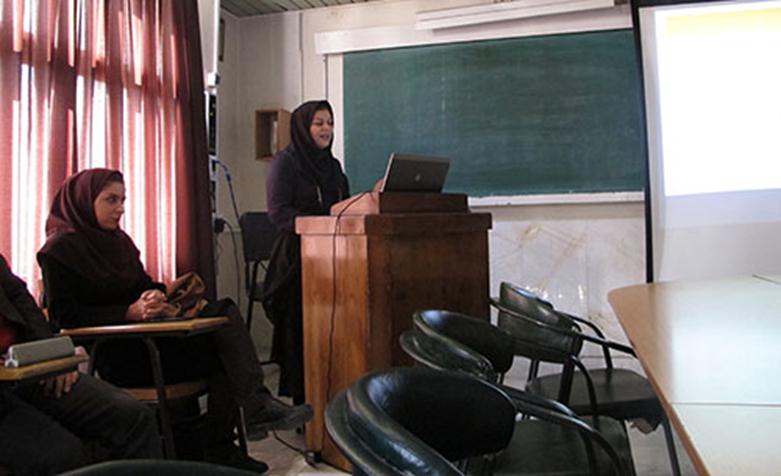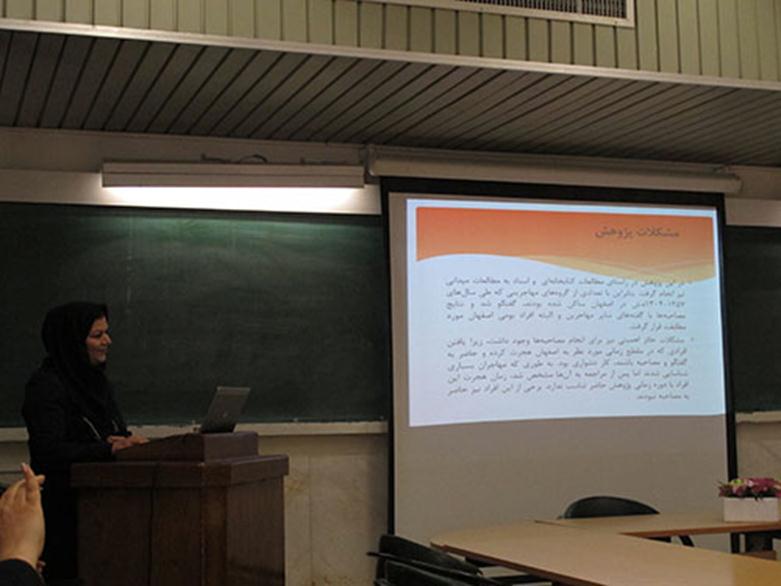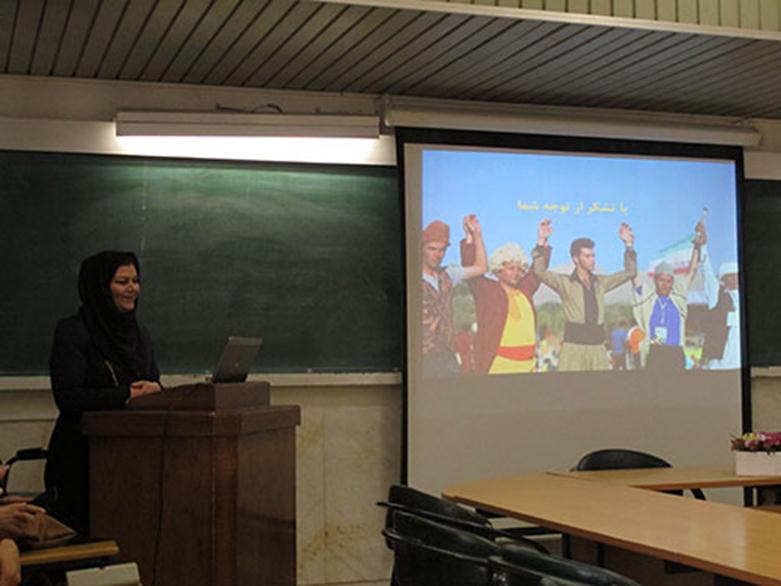Linking Oral History and Local History in a Thesis
Maryam Asadi Jafari
Translated by Ruhollah Golmoradi
2019-02-26
PhD dissertation defense titled "Historical Analysis of Developments Caused by Migration to Isfahan and its Social and Cultural Impacts (1925-1979)" was presented by Masoumeh Goudarzi in Faculty of Literature and Humanities of University of Isfahan on February 12, 2019.
According to Iranian Oral History Website, this dissertation has been compiled with supervising of Dr. Morteza Nouraei and Dr. Abolhasan Fayyaz Anoush, and by efforts of Masoumeh Goudarzi, a graduate of History of Islamic Iran, area of study Local History. Dr. Ali Akbar Kajbaf, Dr. Seyyed Mohammad Seyyed Bonakdar and Dr. Soheila Torabi Farsani also were examiners of this dissertation. Goudarzi got an excellent score after defending the thesis.
The researcher, relying on documents, library resources and field studies, has been studied socio-cultural impacts of migrating to Isfahan during 1925-1979 (1304 to 1357 SH), and effects of migration on categories of food, clothing, education, and rituals.
The study included two groups of samples, "domestic migrants: Bakhtiari clans, Baluch tribes, Kurds and Ajam of Iraq," and "foreign migrants: Russian, English, French, American, German counselors and Polish refugees."
Besides studying library sources and documents, Goudarzi interviewed with a number of immigrant groups in Isfahan, and results of the interviews were corresponded with statements of other immigrants and, of course, indigenous people of Isfahan.
According to the researcher, there were many problems with interviewing because it was difficult to find people who had migrated to Isfahan at the time, and were willing to talk. As many immigrants were identified, but after visiting them it became clear that migration time of these people is not fitted to the current study period. Some of these people were also not willing to be interviewed. Even some interviewees did not give permission to record audio or record their real personal identity due to some personal considerations. Feeling of insecurity in some immigrants has also been one of researcher problems in field studies.
Migrant's places, neighborhoods and educational centers were visited for successive interviews with immigrant families residing in Isfahan. For example, in order to better understand life style of some of Ajam of Iraq, the researcher inevitably visited a coffee houses belonging to these people, and also, with in correspondence with some of the refugees, the researcher participated in their party and grief, and their ceremonies was observed and studied.
In the third chapter of dissertation, Ms. Masoumeh Goudarzi has examined cultural interactions of domestic migrants and indigenous community of Isfahan and its cultural and social consequences. In the fourth chapter, cultural interactions of foreign migrants and local community of Isfahan and its cultural and social consequences have been examined.
The fifth chapter also explores marginalization phenomenon and impact of marginalized areas on socio-cultural structure of Isfahan city, and it was approved based on library resources and field studies that appropriate geographical and natural conditions of Isfahan, growing industries and job creation and urban structure changes have been key factors of attracting migrants to this city.
Other findings of this study include impact of establishing modern schools, establishment of University of Isfahan and Isfahan University of Technology in attracting migrants from distant and near distances to the city. Also lack of services-welfare and medical facilities in rural areas and other cities of Isfahan province, ethnic-tribal conflicts, increased interactions between villagers and urban residents, lack of educational facilities for continuing education and regarding terms such as rural and being from other cities of the province as anti-value, regarding urbanization as value, expanding health, educational and welfare services in Isfahan has led to a wave of migration to the city during the Pahlavi era.
According to field studies, most migrants sought to maintain their habits, feelings and beliefs, and less to be undergone a change in a new environment and process of modernization. In fact, second and third generation of migrants learned the new culture as a native child. But full compliance with the new environment was not possible at least for the first generation of migrants.
According to field studies of PhD dissertation titled "Historical Analysis of Developments Caused by Migration to Isfahan and its Social and Cultural Impacts (1925-1979)" it can be said, "presence of ethnic groups alongside each other has increased intergroup interconnections and has reduced formation of closed and intragroup cultures and has led to strengthening national backings."



Number of Visits: 4189
http://oral-history.ir/?page=post&id=8412
